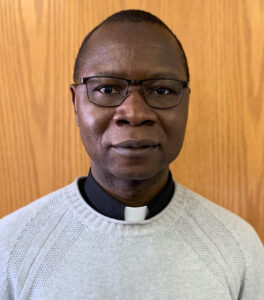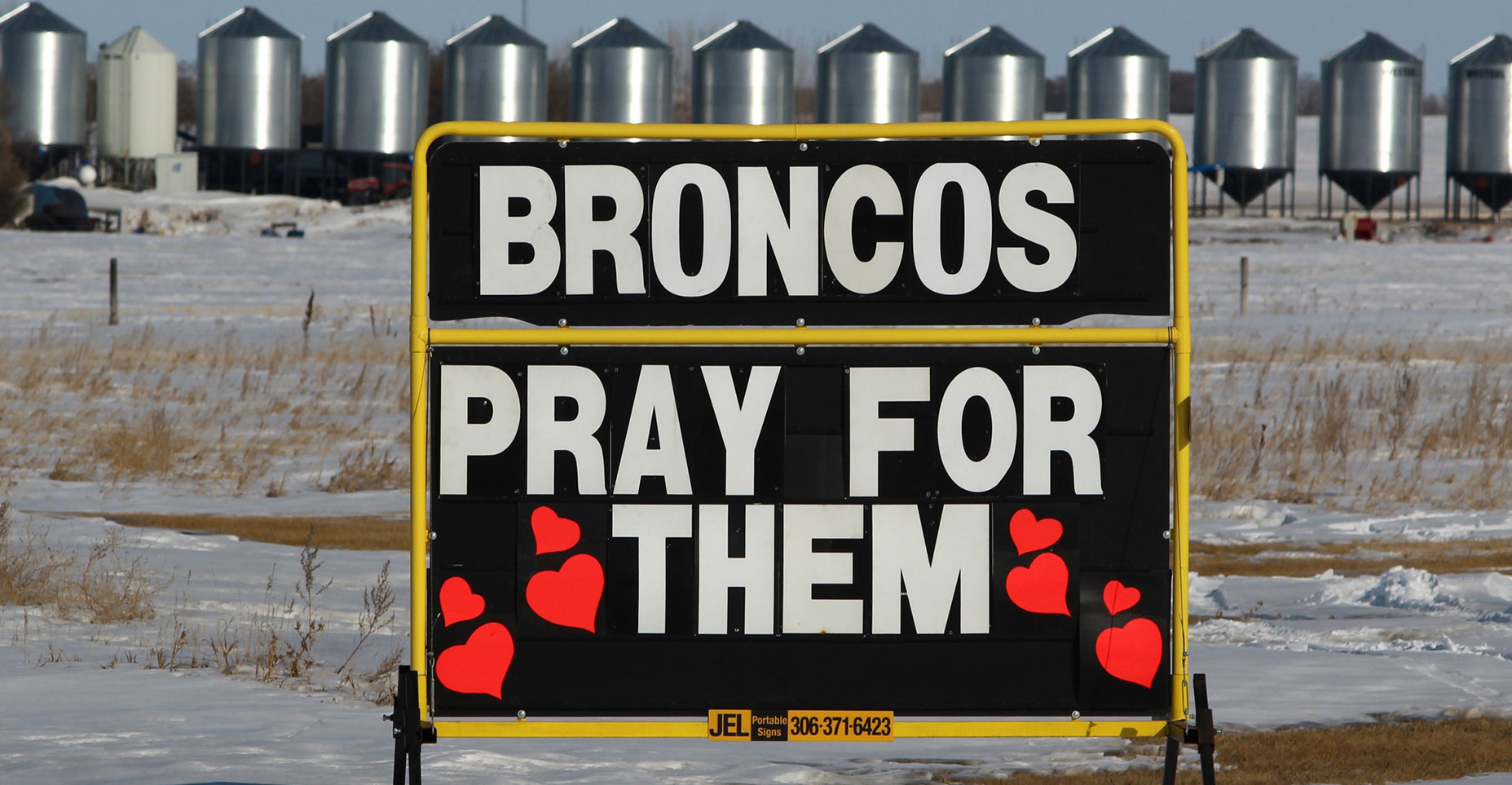It’s been a year since a nation was united in grief, waking up early one spring Saturday morning to the news that a team of young men pursuing their hockey dreams was torn apart in a horrific crash.
The tragedy would claim 16 members of the Humboldt Broncos’ family and leave 13 others with various physical and emotional scars they will carry a lifetime.
It’s a day that resonated beyond the hockey community. Across Canada, and over borders, millions were shaken by the deaths of the players, coaches and team officials on April 6, 2018, a Friday afternoon when the bus carrying the Junior ‘A’ Broncos of the Saskatchewan Junior Hockey League to their next playoff game with the Nipawin Hawks collided with a transport trailer near the community of Tisdale in northern Saskatchewan.
It’s a grief that will be replayed as a town and a nation remember.
Humboldt’s multiple faith groups have organized a memorial service for April 6 at the Humboldt Uniplex, which houses the rink the Broncos’ call home.

Rev. Joseph Salihu, pastor at St. Augustine’s Parish in Humboldt, said the anniversary is another of the peaks and valleys the town’s populace has dealt with since the crash.
“This tragedy has its own rhythm,” said Salihu. “There’s been a lot of climax, then anti-climax. It gets private, it becomes public then private again.”
With the anniversary, the national media has been focused on the crash once again. The remnants of the team — only two players returned this season, which ended with a Game 7 overtime loss to the Estevan Bruins in the quarter-finals March 26 — has been in the public eye all year, with news crews never far from the team during this trying season.
“Old wounds will be opened up and we want the families to know they are supported by us,” said Salihu.
Indeed, the wounds will open again for Salihu and St. Augustine’s parishioners. Like the rest of the town, Salihu and the parish were touched deeply and personally by the tragedy: One of the deceased players, a billet family that lost its adopted hockey son, and the team’s athletic therapist Dayna Brons were all connected to the St. Augustine’s community.
Salihu has kept in touch throughout the year with the families struggling with the loss of loved one.
“Just being present and allowing them to speak to you can be so helpful for them,” said Salihu. “Listening to themselves speak makes more sense than reaching out with a lot of words.”
That’s one of the key lessons Salihu has learned from this tragedy.
“I’ve learned to cultivate presence more than offer words. People appreciate your presence more than what you say.”
That hasn’t been lost on chaplains in Saskatoon’s hospital system.
Jackie Saretsky is co-ordinator of hospital chaplaincy for the Diocese of Saskatoon and was front and centre at Royal University Hospital where most of the crash victims were treated.
The situation was unprecedented for the chaplains and “brought to light that we didn’t have enough information out there for families and what information there was outdated,” said Saretsky.
Still, the chaplains did what they could at the time. There was a chaplaincy presence available 24 hours a day in the weeks following the crash and many families took advantage of what chaplains offered in their time of need.
 Since the accident, Saretsky and chaplains from other denominations have worked with the Saskatchewan Health Authority to get the information out to hospital patients that chaplaincy is available.
Since the accident, Saretsky and chaplains from other denominations have worked with the Saskatchewan Health Authority to get the information out to hospital patients that chaplaincy is available.
“We have made some improvements in awareness of the presence of denominational and interfaith chaplains at the public hospital,” she said. In the event of another crisis, “there will definitely be something more efficient in place.”
Death is no stranger in a town like Humboldt, a retirement community with an aging population. But it’s different when it’s an event of this magnitude and when it is young people who are being buried. It’s taught some lessons to the town.
Humboldt, Salihu said, has recovered its sense of community, something that had been fading in an age where the personal connection is waning.
“This tragedy kind of called us back to what is fundamental to us as a people, and that is we need each other,” he said.
As the anniversary neared, Saretsky said she was seeing signs of this coming together more and more, even in Saskatoon, 110 kilometres west of Humboldt.
It may be something simple, like a bumper sticker with the “Humboldt Strong” hashtag that went viral across the nation. And she hears it from her family who live in the Humboldt area.
“You go to Humboldt and the storefronts still have Broncos and memories of the accident. Humboldt Strong. They’re still very much in that place where they have come very close as a community,” she said. “It’s sad, but when you think of the warmth, the outpouring, it’s almost like balm on the wound.”
